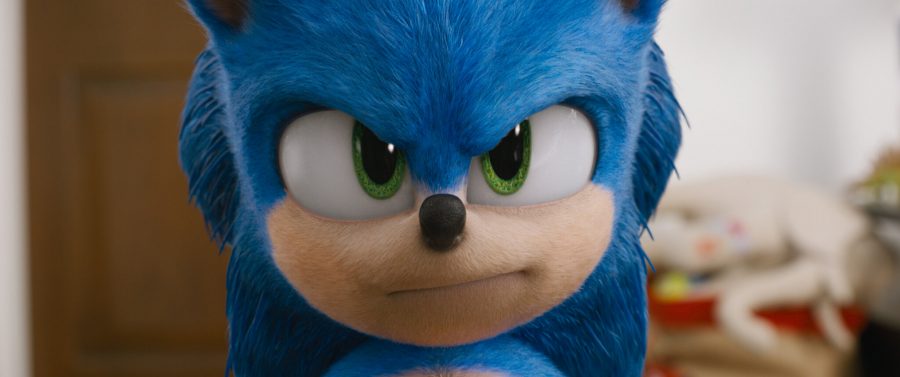Video games: Their journey from our TVs to the movie screens
Photo Credit: Courtesy Paramount
Courtesy of Paramount Pictures
February 20, 2020
With the trend of video games becoming movies resurfacing lately, such as in Sonic the Hedgehog, it is interesting to look back at the history of video games and how they have progressed.
In doing so, it allows those new to video games to appreciate the source material and remind them why so many people choose to play video games.
Gabriela Peralta, a Baruch College digital communications major, believes “people play video games to have an escape” from real life.
“People refer to a variety of artistic mediums such as films, theatre or music as an escape, but gaming allows you to be in control,” Peralta said. “By taking on the role of a character or playing with a team allows you to control the narrative and have fun.”
Beginning in 1962, Steve Russell invented, Spacewar!, the first video game that could be installed and played on multiple computers, according to History.
The next revolution in the industry was the The Brown Box. Created in 1967 by Sanders Associates Inc., this was the first video game system that could be played on a television set.
The real turning point, however, was the creation of the first home video console. Deemed the “Father of Video Games,” Sanders’ Ralph Baer licensed The Brown Box system to Magnavox, an electronics company. Magnavox then sold the system to consumers.
This first home console for video games was known as the Odyssey. Instead of having to play multiplayer games on a computer or spend money in an arcade, an eager player could play at their own leisure from the comfort of their home.
The 1970s and 1980s were marked by releases of staple games still played today. From Space Invaders and Pac-Man to Donkey Kong and Microsoft’s Flight, consumers furiously played and gave positive reviews
This time period brought a rapid progression until the North American video game industry crashed in 1983.
Some of the problems included poor quality of products that did not meet consumer’s excitement, an oversaturated market and competition in the United States and overseas.
One example of this is Atari’s E.T. After Stephen Spielberg requested a video game be made of his movie of the same name, he and Atari negotiated for months.
The result was that the company was forced to produce the game in 36 hours, right before the Christmas season began. At first, the game was selling out in stores until consumers starting playing.
The object of the game was to help the alien E.T. look for parts in order to make a device to call his home planet.
Though seemingly easy enough, the game proved to be much harder, as there were glitches in the game. E.T. was unable to pick up any parts he needed, nor move from room to room. This game is now known as “the worst game ever made.”
As North America faced a crushing blow, Japan was thriving with its newly introduced Nintendo. The company managed to popularize handheld gaming.
It released games like Super Mario Bros., The Legend of Zelda, Tetris and Metroid. Eventually, it transitioned to designing game consoles, such as the GameCube, Game Boy, Game Boy Color, Nintendo DS in 2004 and Nintendo 3DS in 2011.
There was also the creation of the Playstation and Playstation 2, with the latter being the most sold console of all time.
It had the admired features of the Playstation, plus the capability of reading CDs and DVDs. Overtime, the Playstation 3 and 4 came out, along with the introduction of Microsoft Corp.’s Xbox.
Clearly, over the past decades, video games have rapidly developed beyond Spacewar! days.
As stories become richer and the playing community grows, these games are in a way, also becoming movies.
This is evident by releases of the Super Mario Bros, Street Fighter and Mortal Kombat franchises. Since then, Tomb Raider, Rampage, Angry Birds, Assassin’s Creed, Prince of Persia, Final Fantasy, Pokémon and other video games have become movies, with the most recent being Sonic the Hedgehog.
Some, however, are not a fan of this trend.
“I hate video games becoming movies, because movies have time constraints and heavy budget constraints,” Baruch E-Sports Association member James Leidy said.
“While, in a video game it can be as long as the developers want and it can really develop characters and have an amazing plot. Also, having the player element impacts a story more significantly than a movie,” Leidy said.
Sonic the Hedgehog is already such an iconic video game character, known for speeding away from the mad scientist, Doctor Eggman.
Since the start of video games, their intent has been to entice audiences through storylines and graphics, giving them the feeling of living vicariously through the characters.
With the release of the Sonic movie Feb. 14, video game fanatics will have to see whether one of their beloved games is accurately portrayed or not.








